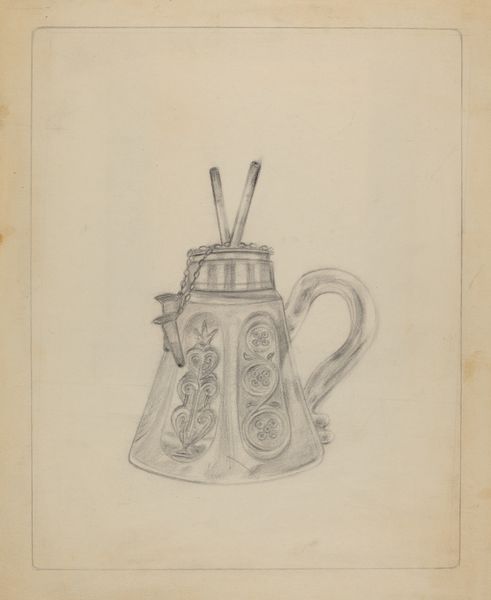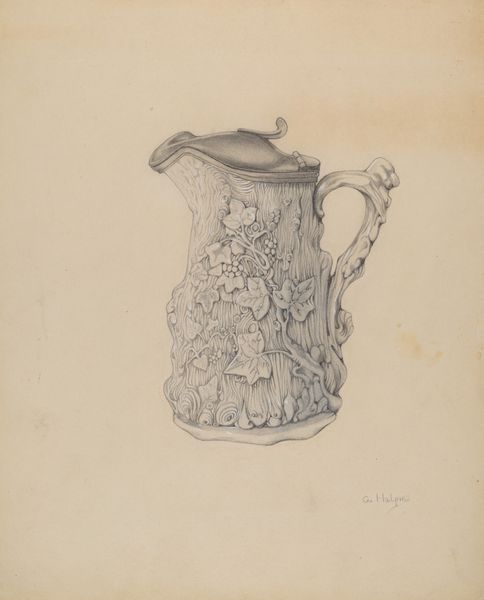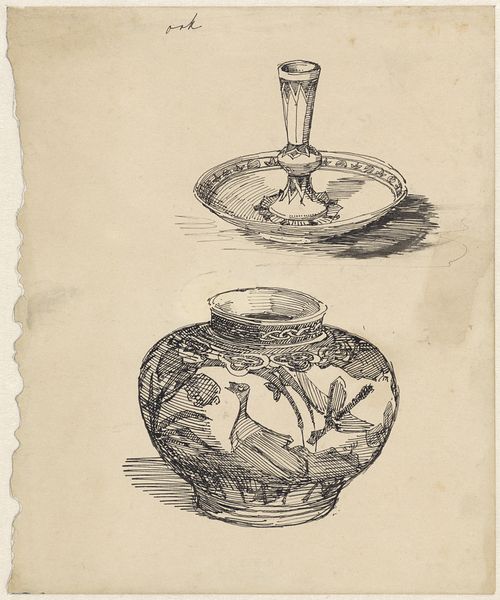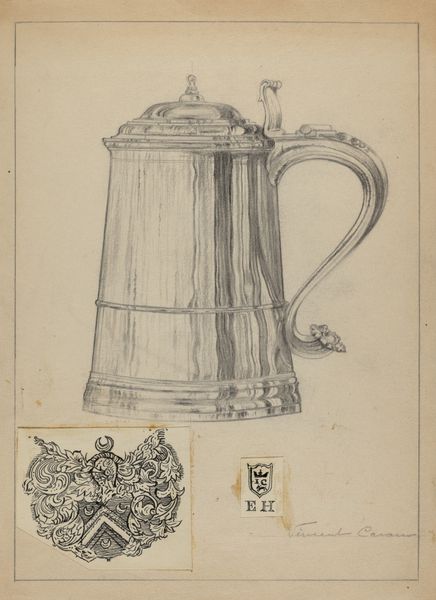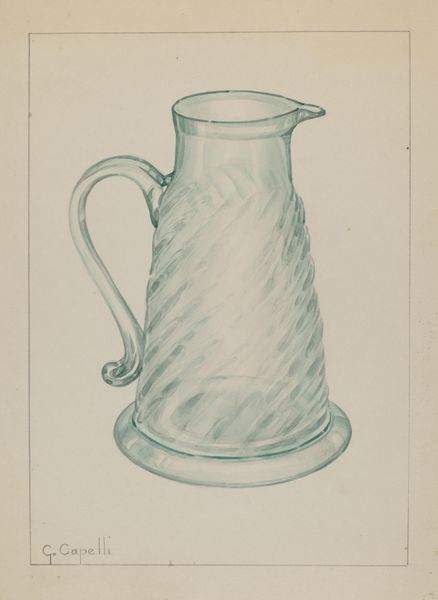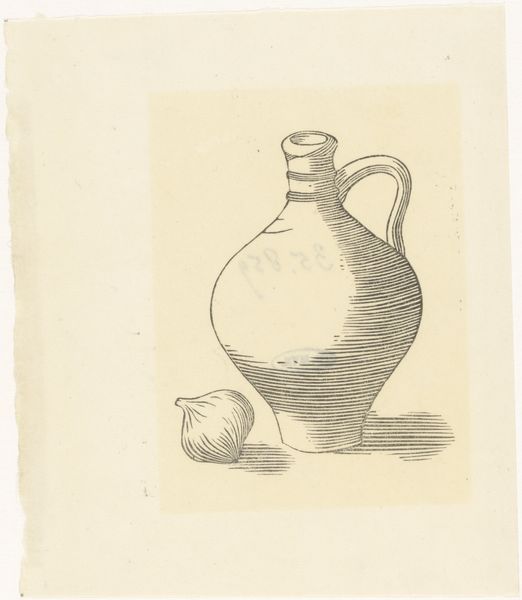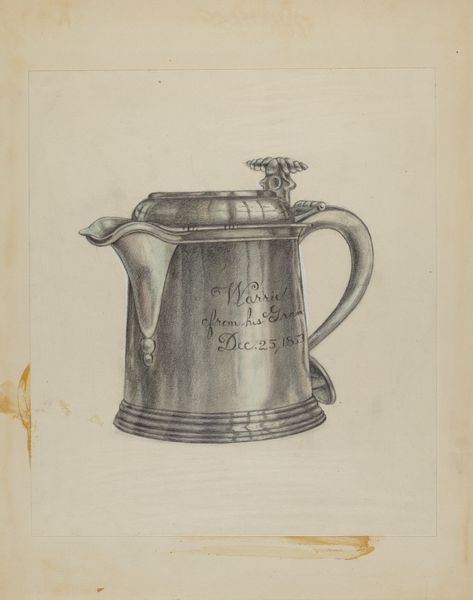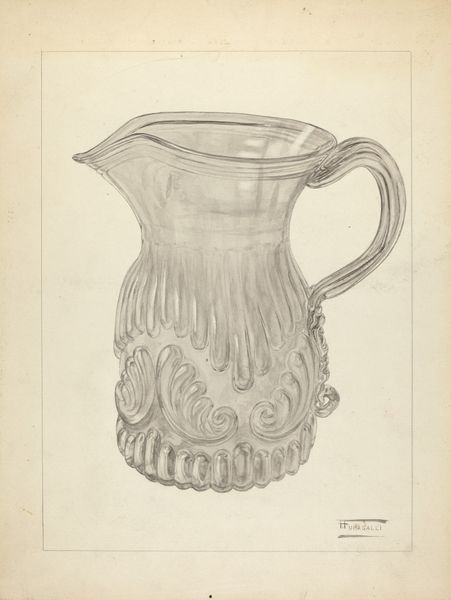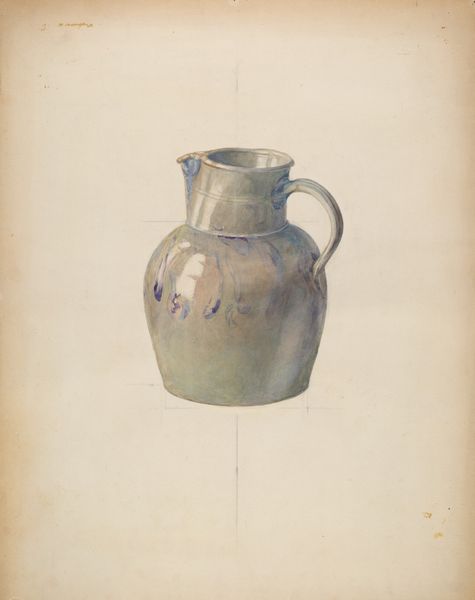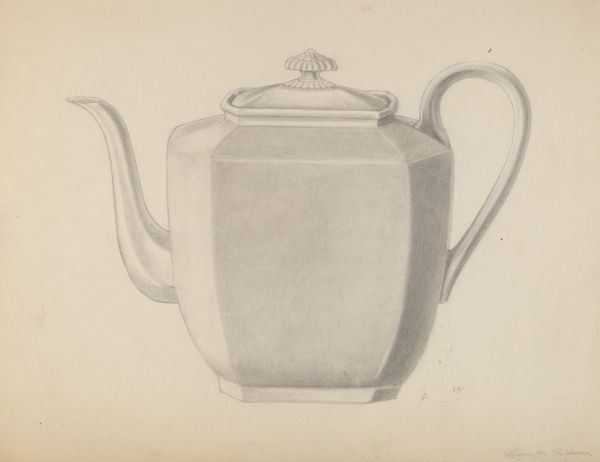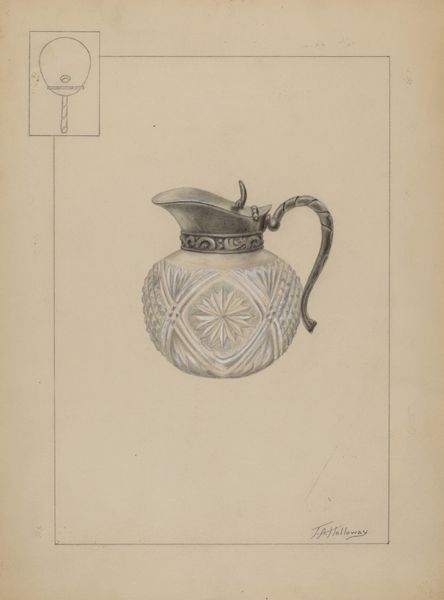
drawing, ink, pen
#
drawing
#
pen sketch
#
vase
#
ink
#
pen
Dimensions: height 200 mm, width 162 mm
Copyright: Rijks Museum: Open Domain
Curator: This is a drawing by Theo Nieuwenhuis, titled "Zeventiende-eeuwse faience uit Kütahya," placing it sometime between 1876 and 1951. It depicts, with pen and ink, two pieces of pottery: a jug and a vase. Editor: I love the scratchiness of it, the tentative lines. It's more of a fleeting impression than a formal portrait, don't you think? Almost like a visual note to self. Curator: Indeed. Nieuwenhuis, though renowned as an artist, had deep connections to the decorative arts. Consider this a study, perhaps—an act of documentation and exploration into the lasting legacy of seventeenth-century Kütahya pottery. Editor: Kütahya, huh? You know, looking at the jug especially, there’s almost an Art Nouveau flourish. The floral patterns feel surprisingly… contemporary, even for something supposedly rooted in the 17th century. Though filtered through Nieuwenhuis’s artistic eye. Curator: These objects were a significant export and were clearly highly valued. The drawing's purpose likely stems from this. Kütahya faience tells a story of cultural exchange, artistic adaptation, and Ottoman craftmanship that resonates even in Nieuwenhuis's interpretation centuries later. The Rijksmuseum certainly cherishes artifacts with similar value in social and cultural heritage. Editor: Makes you wonder about the real, tangible thing. I picture vibrant colours – cobalt blues, maybe some warm reds, which contrast sharply with this almost haunting monochromatic rendition. There's something evocative about what is implied. What is left unsaid. It allows my own mind to create. Curator: And what Nieuwenhuis chose to observe and reproduce provides clues to understanding the artistic influences circulating in the Netherlands at the turn of the 20th century. These forms spoke across the ages. Editor: It’s the ghosts of color and history, all captured in a quick, simple sketch. Makes you feel the weight of time a little differently. Curator: Precisely. And it highlights the enduring power of everyday objects to tell expansive, intricate stories.
Comments
No comments
Be the first to comment and join the conversation on the ultimate creative platform.
